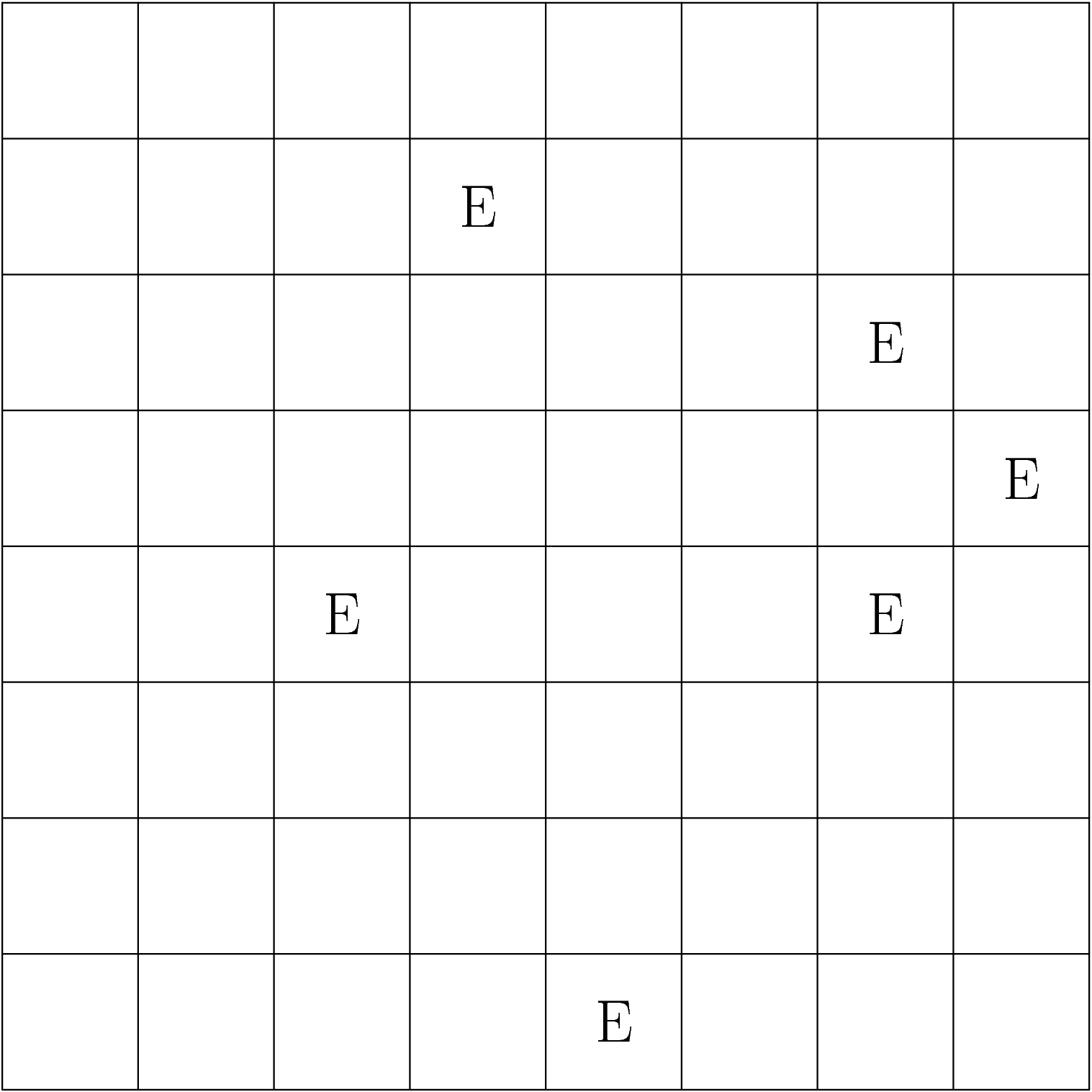A Wordsearch with Only One Word

The above is an 8x8 wordesearch, in which only 6 letters are visible. Your goal is the find the word "BEE".
-
You know that BEE can appear in any "compass" direction. That is, it can appear left-to-right, backwards, diagonally in any orientation, etc.
-
You know that BEE appears exactly once .
-
You know that "B" and "E" are the only two letters filling the grid.
Where is the word "BEE"?
Answer Extraction: Impose a coordinate system where is the square in the th column from the left and the th row from the bottom, so that the bottom-left square is (1,1). If the "B" of the BEE is located at the square with coordinates , then input
The answer is 15.
This section requires Javascript.
You are seeing this because something didn't load right. We suggest you, (a) try
refreshing the page, (b) enabling javascript if it is disabled on your browser and,
finally, (c)
loading the
non-javascript version of this page
. We're sorry about the hassle.
The diagram below shows a possible grid. I don't know if it is unique.